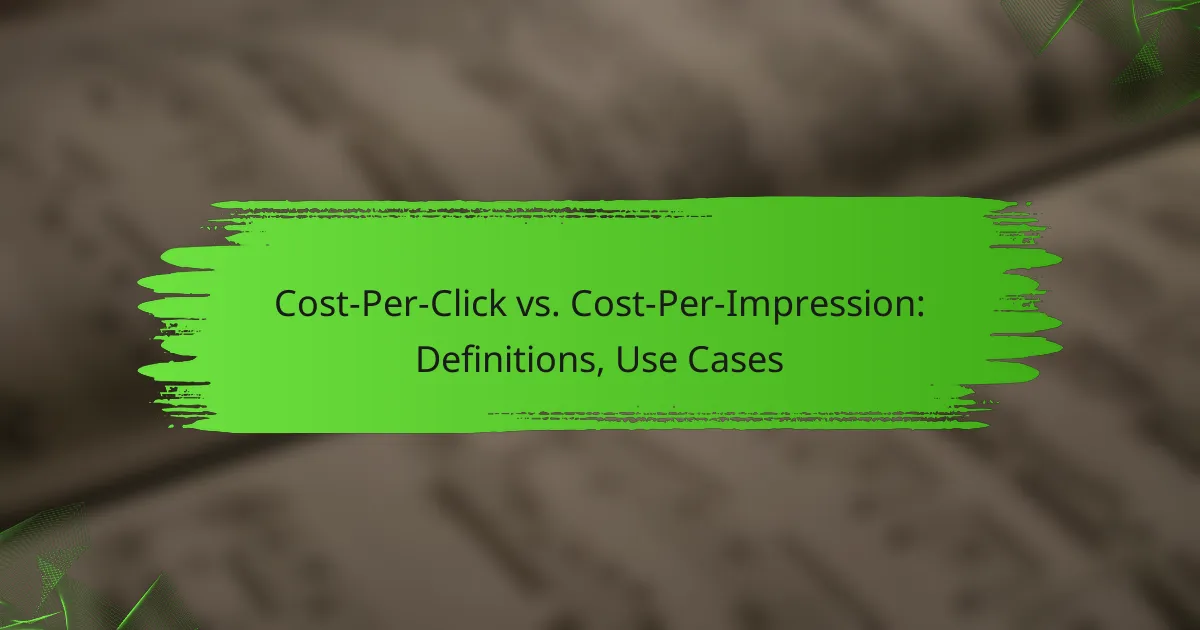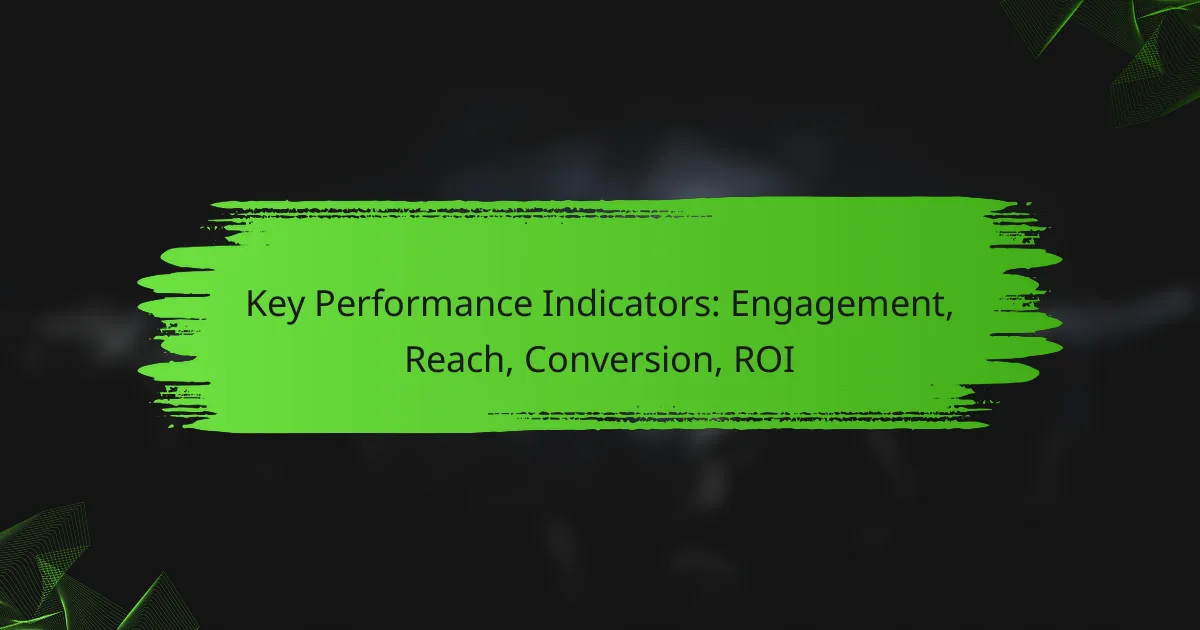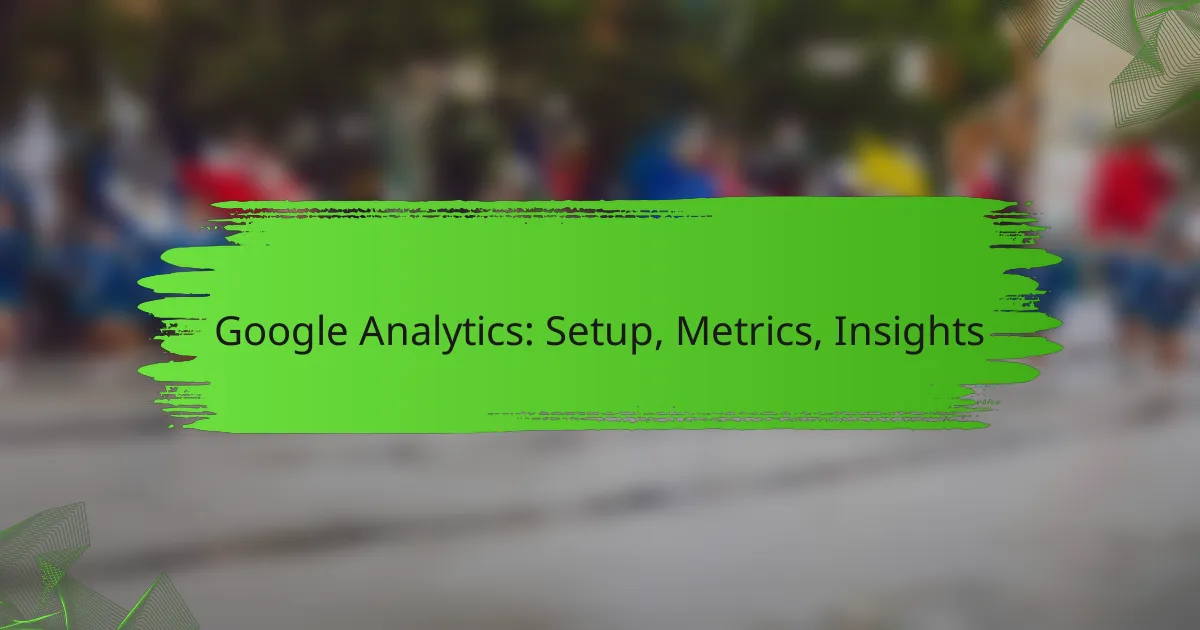Cost-Per-Click (CPC) and Cost-Per-Impression (CPM) are two fundamental pricing models in online advertising, each serving different objectives. CPC is designed to drive immediate user actions by charging advertisers only when their ads are clicked, making it ideal for conversion-focused campaigns. In contrast, CPM charges based on the number of ad impressions, making it a better choice for campaigns aimed at increasing brand visibility and awareness.
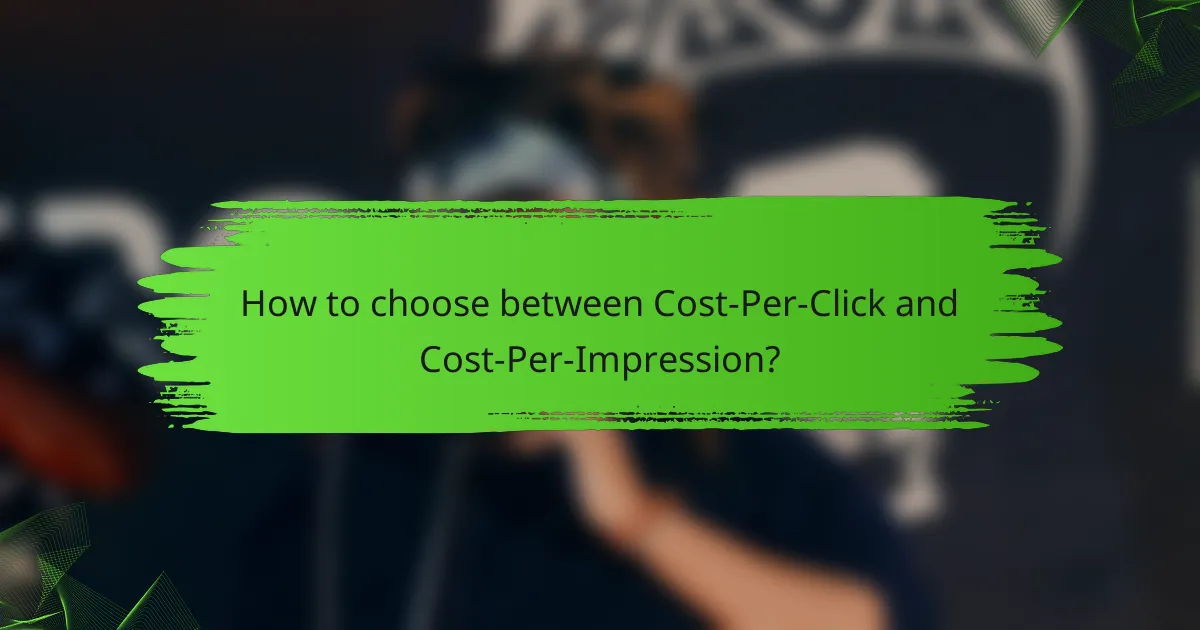
How to choose between Cost-Per-Click and Cost-Per-Impression?
Choosing between Cost-Per-Click (CPC) and Cost-Per-Impression (CPM) depends on your advertising goals. CPC is effective for driving immediate actions, while CPM is better suited for building brand awareness.
Cost-Per-Click for direct response
Cost-Per-Click (CPC) is a pricing model where advertisers pay each time a user clicks on their ad. This model is ideal for campaigns focused on generating leads or sales, as it directly correlates spending with user engagement. For example, if your goal is to drive traffic to a landing page, CPC can provide measurable results.
When using CPC, it’s crucial to optimize your ad copy and targeting to ensure high click-through rates. Consider setting a maximum bid to control costs and monitor performance closely to adjust strategies as needed.
Cost-Per-Impression for brand awareness
Cost-Per-Impression (CPM) charges advertisers based on the number of times their ad is shown, regardless of whether users interact with it. This model is particularly effective for campaigns aimed at increasing brand visibility and awareness. For instance, if you want to reach a broad audience to promote a new product, CPM can be a cost-efficient choice.
With CPM, focus on creative and engaging ad designs to capture attention, as the goal is to make an impression rather than drive immediate clicks. Tracking metrics like reach and frequency can help assess the effectiveness of your brand awareness campaigns.
Target audience considerations
Understanding your target audience is essential when choosing between CPC and CPM. If your audience is likely to engage with your ads and take action, CPC may yield better results. Conversely, if your goal is to reach a large number of potential customers who may not be ready to click immediately, CPM could be more beneficial.
Utilize audience segmentation to tailor your approach. For example, targeting specific demographics or interests can enhance the effectiveness of either model, ensuring that your ads reach the right people at the right time.
Campaign goals alignment
Your campaign goals should dictate whether to use CPC or CPM. If your primary objective is to drive conversions, CPC aligns well with this goal, as you only pay for actual clicks. However, if your focus is on building brand recognition over time, CPM might be the better option.
Establish clear metrics for success based on your goals. For CPC, track conversion rates and cost per acquisition, while for CPM, monitor impressions and brand recall. This alignment will help you allocate your budget effectively and achieve desired outcomes.
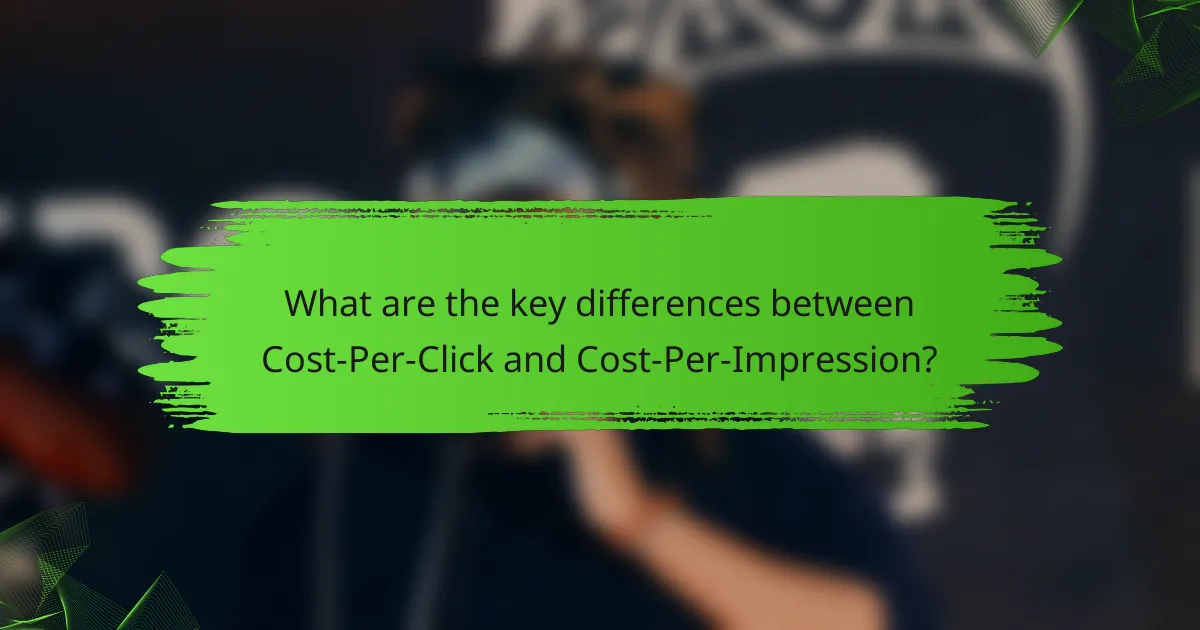
What are the key differences between Cost-Per-Click and Cost-Per-Impression?
Cost-Per-Click (CPC) and Cost-Per-Impression (CPM) are two distinct online advertising pricing models. CPC charges advertisers when users click on their ads, while CPM charges based on the number of times ads are shown, regardless of user interaction.
Payment structure comparison
The payment structure for CPC involves advertisers paying only when a user clicks on their ad, making it a performance-based model. In contrast, CPM requires advertisers to pay a set fee for every thousand impressions, regardless of whether users engage with the ad.
This difference means that CPC can be more cost-effective for campaigns focused on driving traffic, while CPM may be better suited for brand awareness campaigns where visibility is the primary goal.
Performance metrics
Performance metrics for CPC campaigns typically focus on click-through rates (CTR) and conversion rates, as these indicate how effectively the ad drives user actions. Advertisers can analyze the cost per conversion to assess the return on investment.
For CPM campaigns, key metrics include impressions served and reach, which help measure the ad’s visibility and audience exposure. Advertisers often look at the cost per thousand impressions to evaluate the efficiency of their spending.
Use case scenarios
CPC is ideal for campaigns aiming to generate immediate traffic or leads, such as e-commerce promotions or sign-up offers. Advertisers can closely monitor user engagement and adjust bids based on performance.
On the other hand, CPM works well for brand-building initiatives, such as product launches or awareness campaigns, where the goal is to maximize visibility across a broad audience. It allows for extensive reach without the need for immediate user interaction.
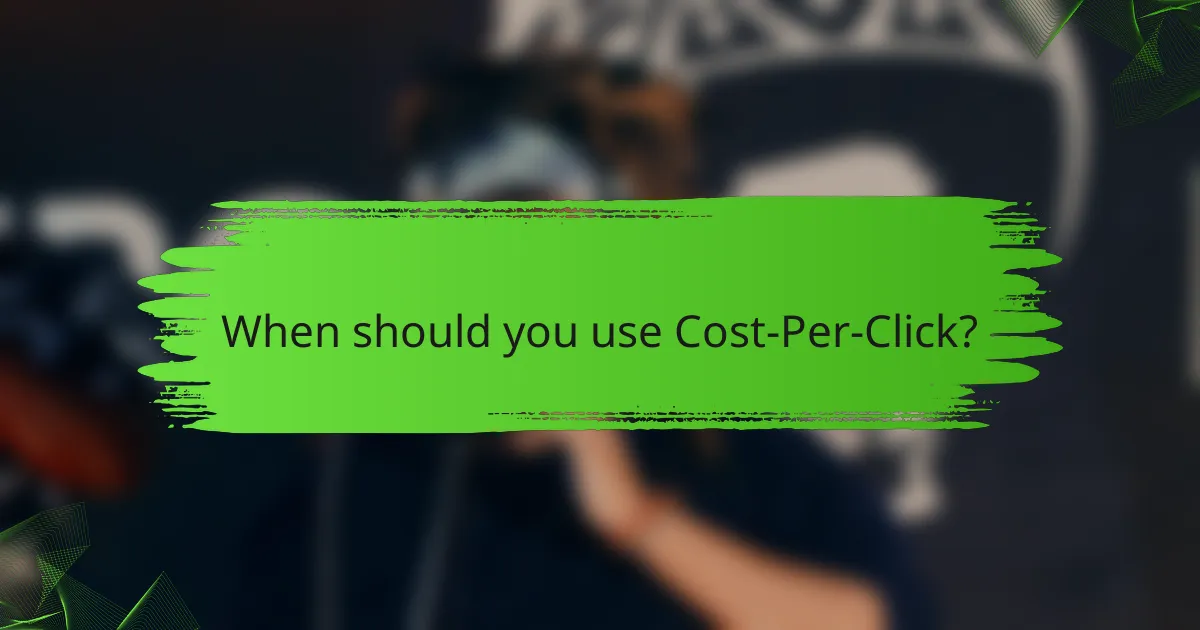
When should you use Cost-Per-Click?
Cost-Per-Click (CPC) is ideal when your goal is to drive high-intent traffic to your website. This model allows you to pay only when a user clicks on your ad, making it a cost-effective choice for campaigns focused on conversions.
High-intent traffic generation
Using CPC is particularly effective for generating high-intent traffic, as it targets users actively searching for specific products or services. This approach ensures that your advertising budget is spent on users who are more likely to convert, rather than just view your ad.
To maximize high-intent traffic, focus on keyword research to identify terms that indicate purchase intent. For example, keywords like “buy,” “discount,” or “best price” can attract users ready to make a decision.
Specific product promotions
CPC is also beneficial for promoting specific products, especially during sales or limited-time offers. By using targeted ads, you can drive traffic directly to product pages, increasing the likelihood of immediate purchases.
When setting up a CPC campaign for product promotions, consider creating ad groups that focus on individual items or categories. This allows for more tailored messaging and can improve click-through rates. Additionally, monitor your campaigns regularly to adjust bids and optimize performance based on real-time data.
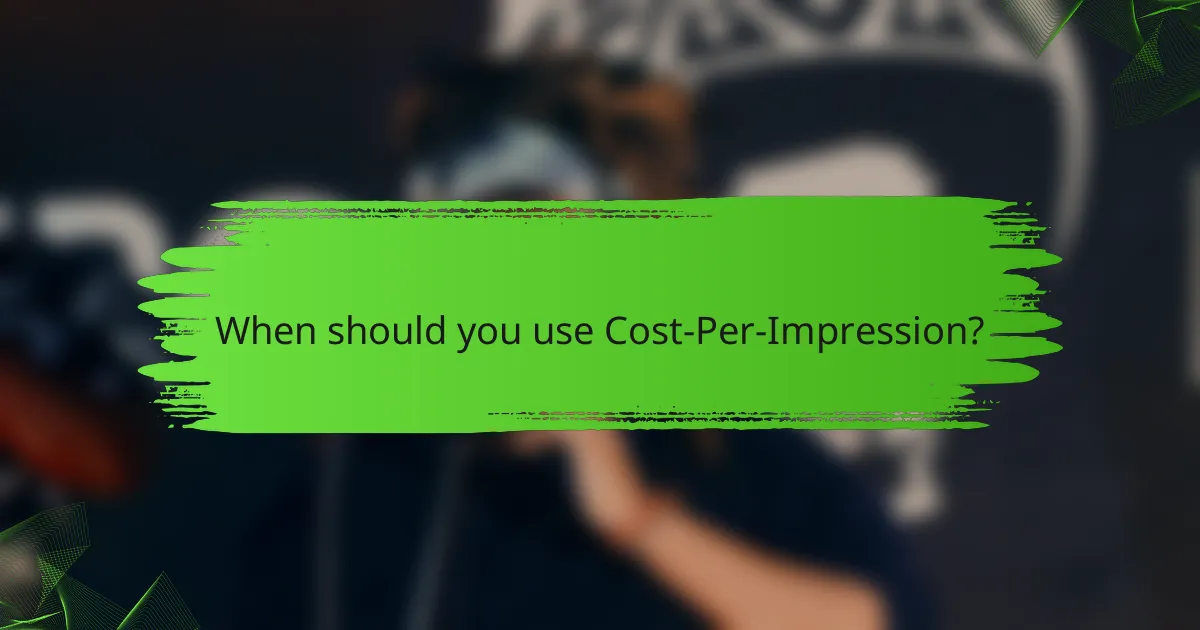
When should you use Cost-Per-Impression?
Cost-Per-Impression (CPI) is ideal for campaigns focused on maximizing brand visibility rather than immediate clicks. It allows advertisers to pay for every thousand impressions, making it suitable for building awareness among a broad audience.
Brand visibility campaigns
Cost-Per-Impression is particularly effective for brand visibility campaigns, where the goal is to enhance recognition and recall rather than drive direct actions. Advertisers can showcase their brand to a large audience, ensuring that their message reaches potential customers multiple times.
For instance, a company launching a new product may opt for CPI to ensure their ads are seen frequently, reinforcing brand presence in the market. This approach is beneficial when the target audience is still in the awareness stage of the buying journey.
Broad audience reach
Using Cost-Per-Impression is advantageous when aiming for a broad audience reach. This pricing model allows advertisers to cast a wide net, ensuring their ads appear across various platforms and demographics without focusing solely on immediate conversions.
For example, a national campaign promoting a new service can utilize CPI to reach diverse consumer segments across different regions. By prioritizing impressions, brands can gather valuable data on audience engagement and preferences, which can inform future marketing strategies.
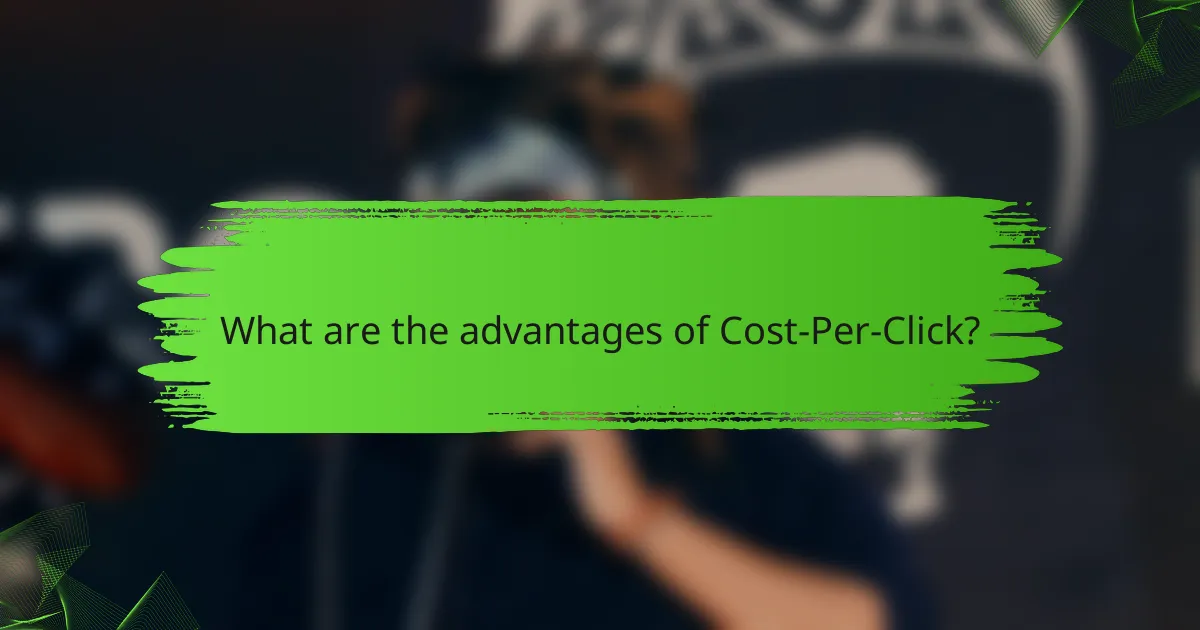
What are the advantages of Cost-Per-Click?
Cost-Per-Click (CPC) offers several advantages, primarily focusing on driving measurable traffic to your website. Advertisers only pay when users click on their ads, making it a cost-effective option for generating leads and conversions.
Measurable ROI
CPC campaigns allow for clear tracking of return on investment (ROI) since each click can be directly linked to user actions on your site. This means you can analyze which ads are performing well and which are not, enabling data-driven decisions to optimize your marketing strategy.
For example, if you spend $100 on a CPC campaign and receive 200 clicks, your cost per click is $0.50. If those clicks lead to sales worth $500, your ROI is 400%. This level of clarity helps you allocate your budget effectively.
Control over ad spend
With CPC, you have significant control over your advertising budget. You can set daily or monthly limits to ensure you do not exceed your financial constraints, allowing for better cash flow management. This flexibility is particularly beneficial for small businesses or startups.
Additionally, you can adjust bids based on performance. If certain keywords yield better results, you can increase your bid for those while reducing spend on underperforming keywords. This strategic management helps maximize your advertising efficiency.
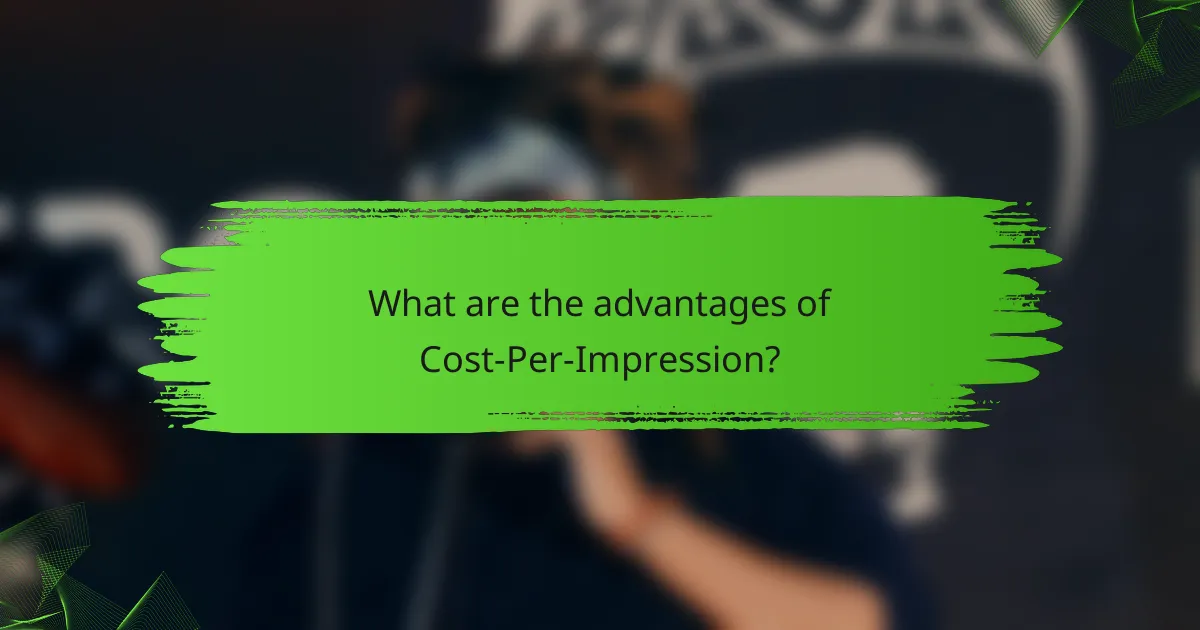
What are the advantages of Cost-Per-Impression?
Cost-Per-Impression (CPI) offers several advantages, particularly for brand awareness campaigns. It allows advertisers to pay for ad visibility rather than engagement, making it suitable for reaching a broad audience.
Increased Brand Visibility
One of the primary benefits of Cost-Per-Impression is the potential for increased brand visibility. Advertisers can display their ads to a large number of users, ensuring that their brand is seen by many, even if those users do not click on the ad. This is particularly useful for new products or services that need to establish recognition in the market.
For instance, a company launching a new beverage might choose a CPI model to ensure their ads appear on popular websites, maximizing exposure to potential customers. This strategy can help create a lasting impression and build familiarity with the brand.
Effective for Broad Audiences
CPI is effective for campaigns targeting broad audiences, as it focuses on impressions rather than clicks. This is advantageous for businesses looking to reach a wide demographic without the need for immediate action from users. By prioritizing visibility, advertisers can gather data on audience engagement and adjust their strategies accordingly.
For example, a fashion retailer might use CPI to showcase their latest collection across various platforms, allowing them to gauge interest levels before launching a more targeted campaign. This approach can lead to better-informed marketing decisions in the future.
Cost-Effective for Certain Campaigns
Cost-Per-Impression can be cost-effective for campaigns where the goal is brand awareness rather than direct conversions. Advertisers can often secure lower rates for impressions compared to clicks, making it a budget-friendly option for reaching a larger audience. This is especially true in competitive markets where click costs can be high.
For instance, a local restaurant might opt for a CPI model to promote a new menu item, ensuring that their ads are seen by local residents without overspending on click-based advertising. This allows them to maximize their advertising budget while still achieving their visibility goals.
